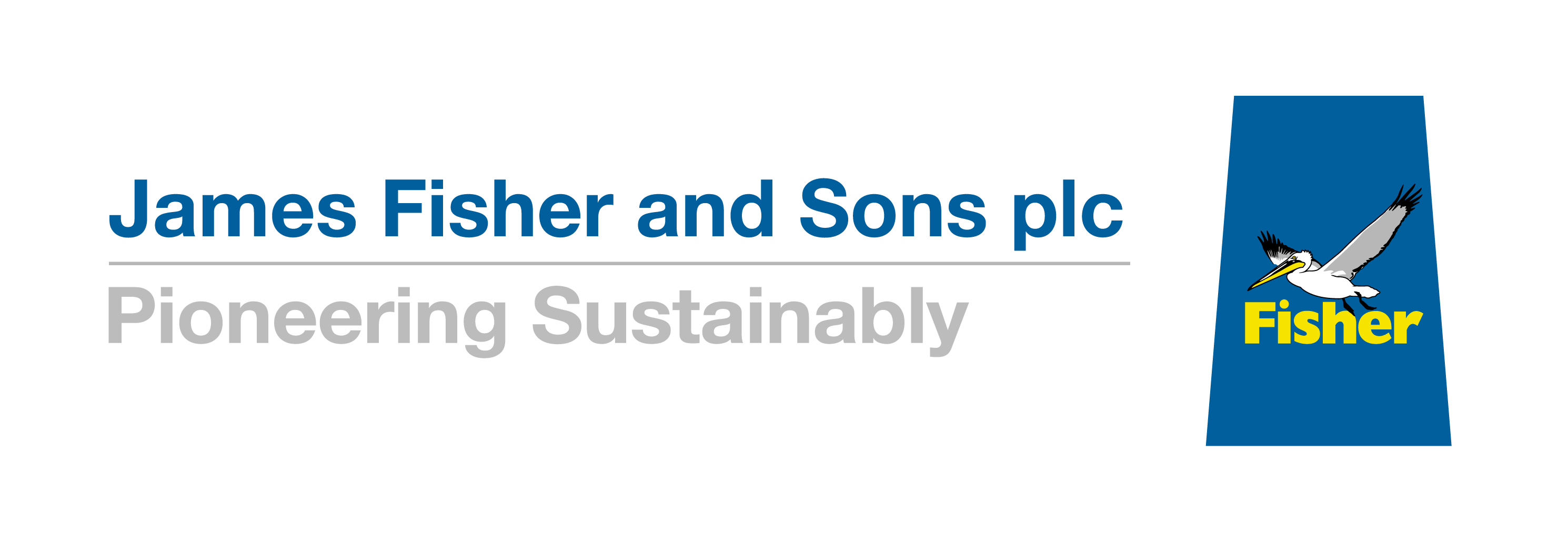- Products
- Commercial divers’ equipment
- Compasses and watches
- Defence divers’ equipment
- Diving instrumentation
- Electrical diving equipment
- Escape and abandonment
- Gas and fluid systems
- Medical and safety equipment
- Recompression chambers
- Submarine intervention
- Submarine rescue
- Tactical Diving Vehicles
- Ansti testing equipment
- Services
- Consultancy and personnel
- Engineering services
- Rescue and support
- Testing services
- Training services
- Ancillary dive gear
- Commercial equipment and tools
- Commercial helmets, masks and SCUBA
- Commercial rebreathers
- Commercial surface supply
- Diver's suits and harnesses
- Contaminated water diving system
- BIBS manifold block
- Divex back pressure regulator
- Divex interlock
- Hy-Fex hyperbaric fire extinguisher
- Hyperbaric flame detector
- Hyperlite hyperbaric stretcher
- Oxygen kits
- Ultralite 2 BIBS mask
- InVicto ventilator system
- DSAR rescue vehicles
- Launch and recovery systems
- Multi-role launch and recovery system
- Submarine rescue bell
- Client representatives
- Dive and ROV system audits
- Diving technical expertise
- Offshore personnel
- Rescue certification
- Remote audit solution
- Altitude testing and trials
- Hyperbaric welding
- Pressure testing and trials
- Test tank
- Breathing laboratory
- Commercial development courses
- Defence training courses
- Medical training courses
- Product specific courses
- Online training courses
- Classroom training FAQ
- Case Study: Roger Chapman Pisces III
- Case Study: HMS Edinburgh
- ANSTI CSTF
- Akademik Tofiq Ismayilov (ATI)
- Archive
- JFD strengthens Commercial Diving business with leadership appointments
- JFD unveils new product concept ‘Stealth Multi-Role’ at key industry events
- JFD North America enhances US Navy Submarine Rescue capabilities with advanced Integrated Communication System
- JFD successfully integrates and delivers advanced submarine rescue system for Republic of Korea Navy
- Archive
- Divulged - Winter 2017
- Divulged - Summer 2017
- Divulged - Winter 2016
- Divulged - Summer 2018
- Divulged - Winter 2018
- Divulged - Winter 2019
- Divulged 2021 Edition 1
- UDT 2019
- Visit JFD at UI 2016
- Visit us at OTC Asia 2018
- Visit JFD on stand 338 at Underwater Intervention 2018
- JFD is exhibiting at ONS 2018
- JFD is exhibiting at OSEA 2018
- Join JFD at IDEX 2019
- See JFD at Subsea Expo 2019
- JFD takes on BALT Military Expo
- JFD presents complete defence offering at UDT 2018 in Glasgow
- Join JFD at ADIPEC 2018
- Visit JFD at Pacific 2017
- Visit JFD at MSPO 2018 in Poland
- JFD presenting at UDT conference
- JFD is exhibiting alongside James Fisher Nigeria at NOG
- JFD exhibiting at UDT 2016
- Visit JFD at Underwater Intervention 2019
- JFD is participating at Underwater Defence & Security
- See JFD at this year’s IMCA Annual Seminar
- JFD is exhibiting at LAAD Defence & Security 2019
- JFD LEXMAR is exhibiting at OSEA 2016
- JFD is exhibiting at Subsea Expo 2017
- Visit JFD at Indo Defence 2018 Expo and Forum
- Visit JFD on stand 403 at Underwater Intervention 2017
- JFD exhibiting at Europoltech
- JFD at IMDEX
- Visit JFD at UDT 2017
- Visit JFD at DSEI 2017
- JFD is exhibiting at OTC 2018
- JFD is exhibiting at Subsea EXPO 2018
- JFD is exhibiting at Sea Air Space 2018
- Visit JFD at DSA 2018
- See JFD at Defexpo 2018
- JFD is exhibiting at ADIPEC 2017
- Come see JFD at DSEI!
- See JFD at IMDEX Asia 2019
- JFD is at Oil & Gas Asia 2019
- Experience DSEI with JFD
- See JFD's full defence capability at MSPO 2019
- JFD is exhibiting at this year's Offshore Europe
- Visit us on stand 2S16 at Pacific
- See JFD at ADIPEC on stand 13572
- Explore our commercial capabilities at Bergen International Diving Seminar
- JFD showcasing commercial and defence capabilities at Underwater Intervention
- JFD exhibiting alongside James Fisher Offshore at Subsea Expo
- Visit our stand at DSEI 2021!
- Join JFD at Subsea Expo 2022
- Visit JFD Australia at Indo Pacific 2022
- JFD North America is exhibiting at SOFIC 2022
- Experience CNE 2022 with JFD
- Discover JFD at UDT 2022
- Join JFD at GSOF Symposium Europe this October

Third Generation - Key features
< Back to Third Generation Submarine Rescue System page
JFD's Third Generation Submarine Rescue system has a number of key features and is the result of an internal research and development programme, developed against a set of generic, but well-considered and representative requirements, rather than those of one specific customer.
Whilst the overarching architecture is common, the system can be tailored to suit the specific needs of particular navies, including for example:
- Operating depth, to suit a particular nation’s submarine characteristics, collapse depth and geography.
- Hyperbaric capacity and layout, and the associated SRV evolution complement size.
- Transportation package size, optimised for differing aircraft types
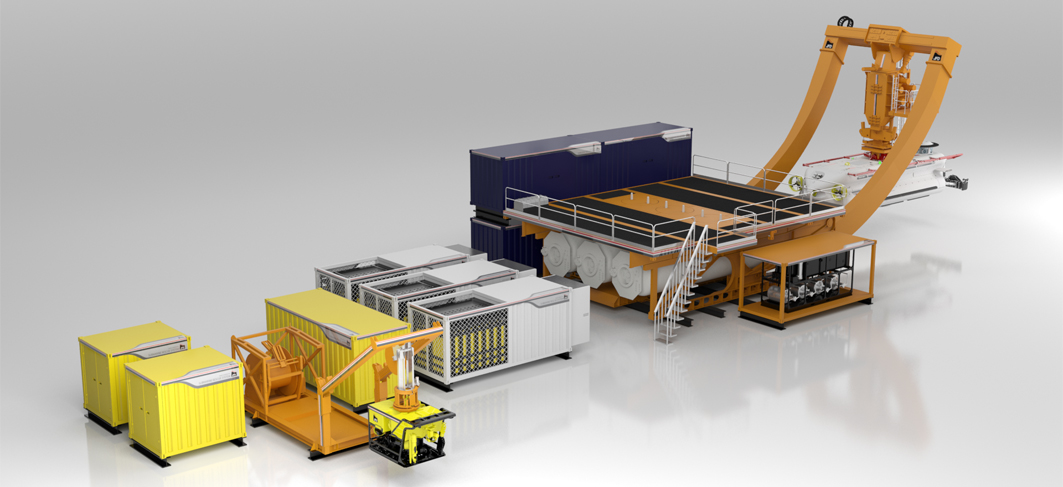
Fewer interfaces
The number of interfaces between assets has been greatly reduced. This simplified arrangement reduces the mobilisation time for the entire system as it negates the alignment requirements typical of Second Generation systems.
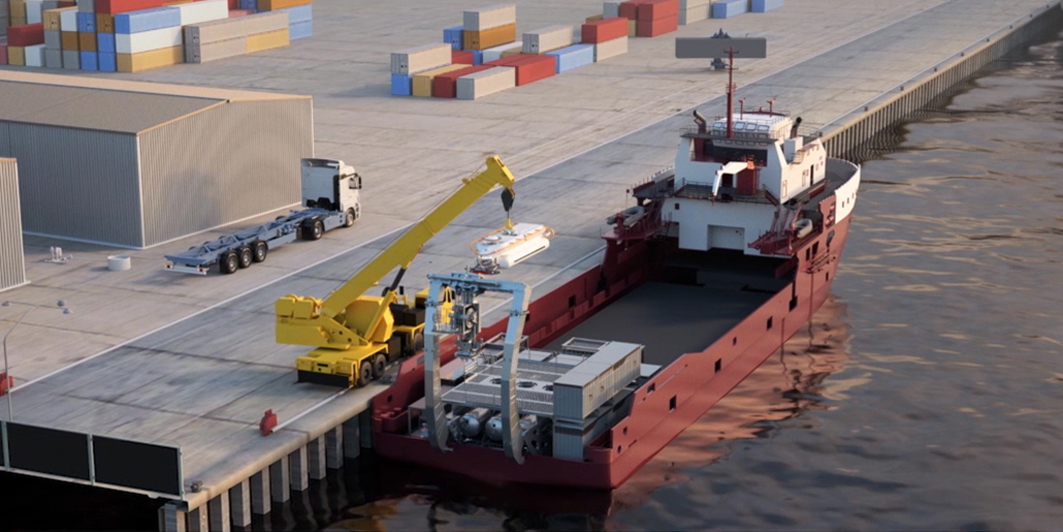
Flexible system layout
The system can be installed on vessels with unusual deck arrangements. The system is modular and various aspects can be deployed independently. For example individual decompression chambers can be deployed independent of the rest of the system for escape support or secondary roles.
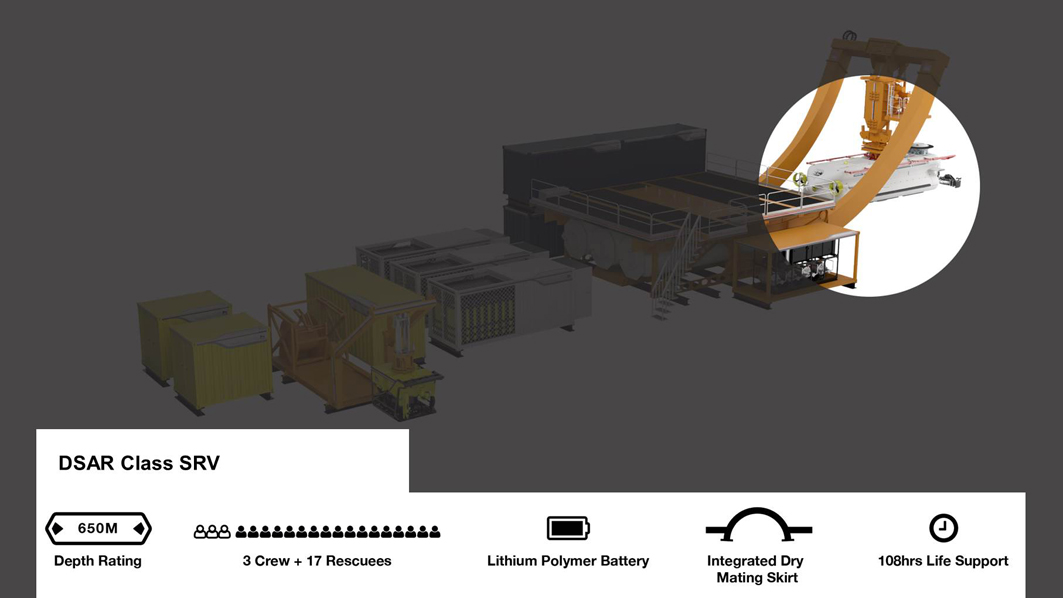
DSAR-class SRV
An adaptable and reliable system, based on ‘simple’ technology, allowing for repairs and maintenance while offshore with a minimal spares package. Lightweight, quick to deploy and with incredible endurance, DSAR is a proven class of SRV with three similar submersibles in operation worldwide. This SRV is capable of operating at depth ratings of up to 650msw, crew of 3 plus up to 17 rescuees, integrated dry mating skirt, Lithium Polymer battery system, 108 hours of life support, capable of mating at angles of up to 60°, and operating in currents of up to 3 knots.
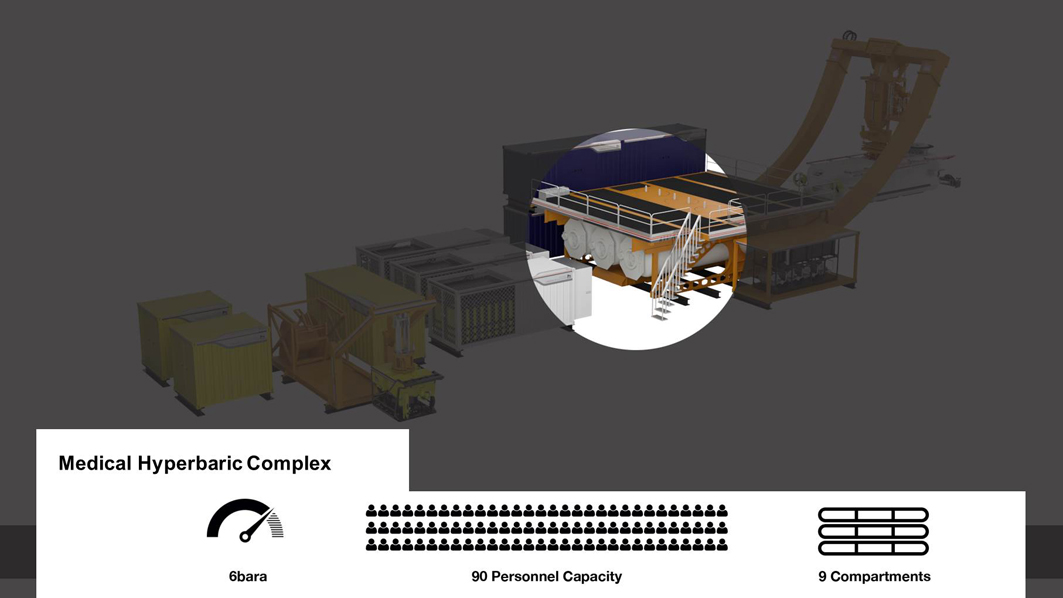
Medical hyperbaric complex
A 6bara medical hyperbaric complex capable of treating and decompressing up to 90 personnel at any one time in 9 separate compartments. Integrated with Launch & Recovery System for efficient mobilisation.
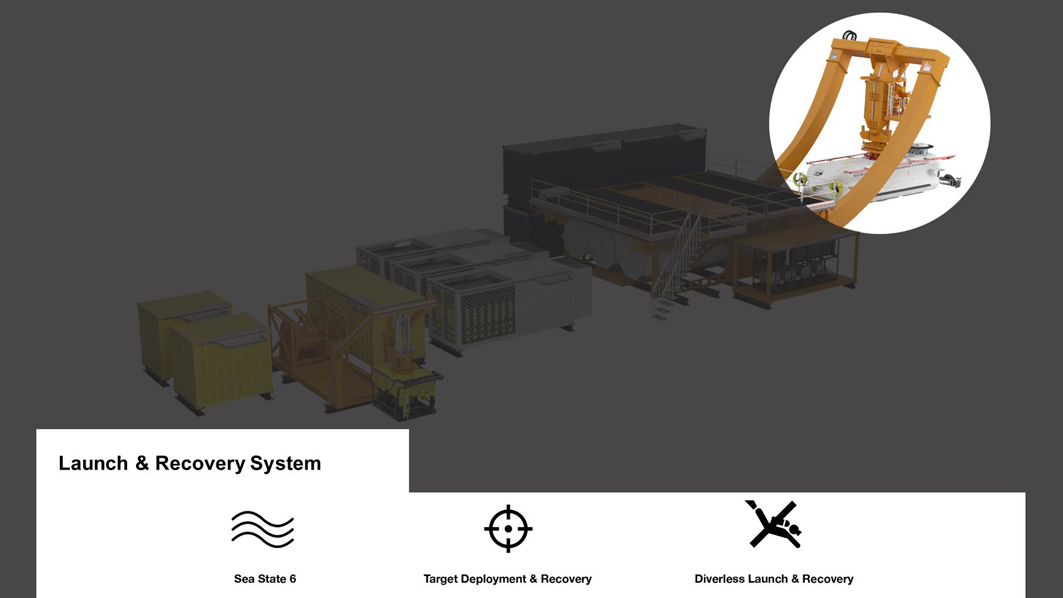
Launch & recovery system
Following a rescue, the LARS positions the SRV above one of three man-ways, allowing rescuees to enter directly into the Hyperbaric Medical Complex below. The Launch and Recovery System is capable of handling the SRV in conditions up to and including sea state 6; built-in ability to launch and recover exercise targets; Diverless Launch and Recovery System.
Unlike other systems, the Launch & Recovery System strongbacks have been integrated into the Hyperbaric Medical Complex. This dramatically reduces weight and mobilisation time while spreading loads evenly across a large area of the chosen ship’s structure.
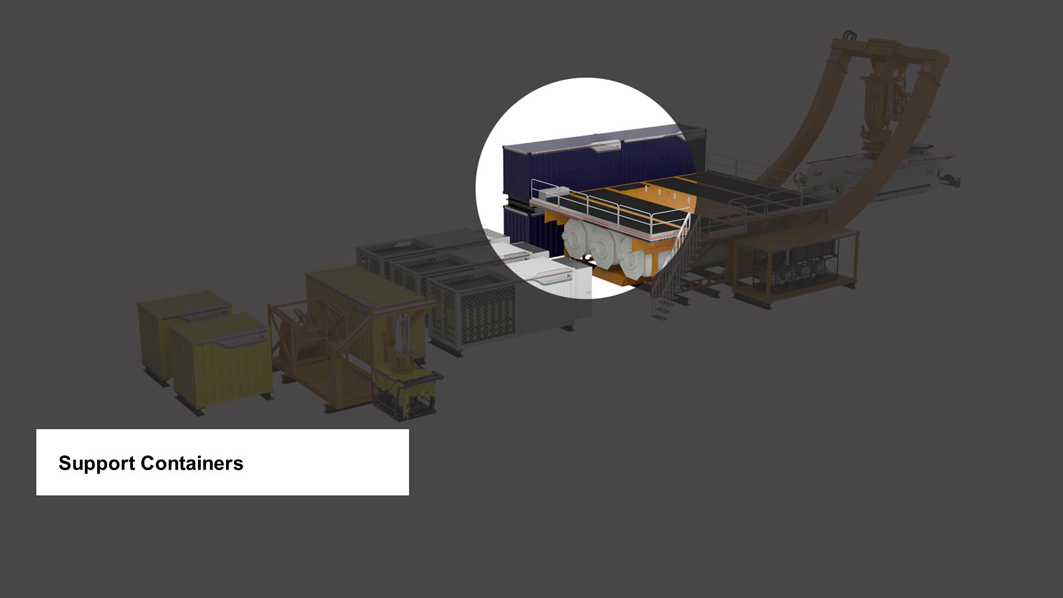
Support containers
Contain equipment and spares required to operate and maintain the entire system while at sea.
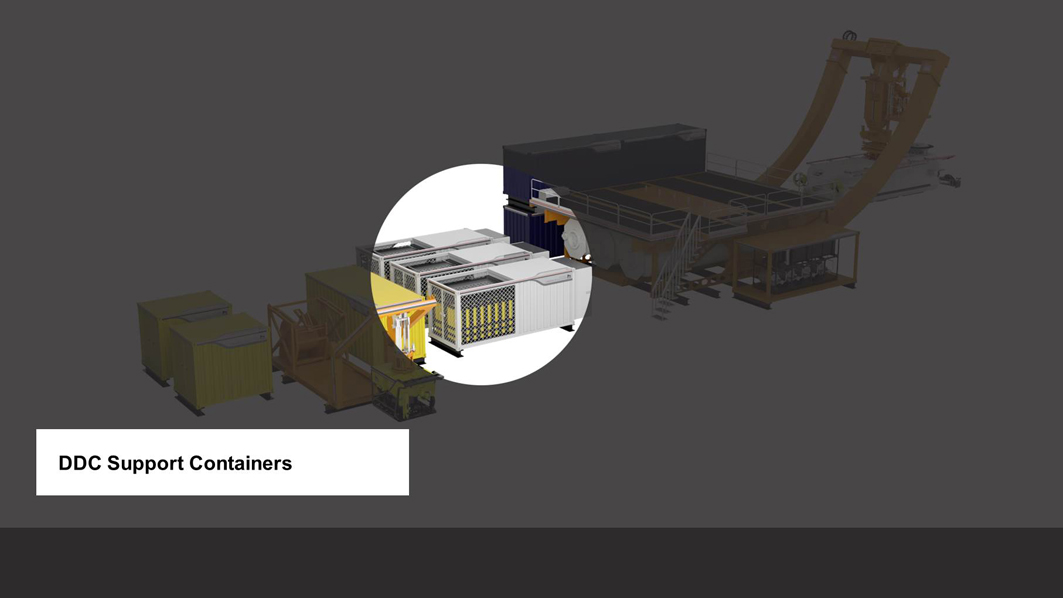
DDC support containers
Primarily provides high-pressure air and therapeutic gasses to the Hyperbaric Medical Complex.
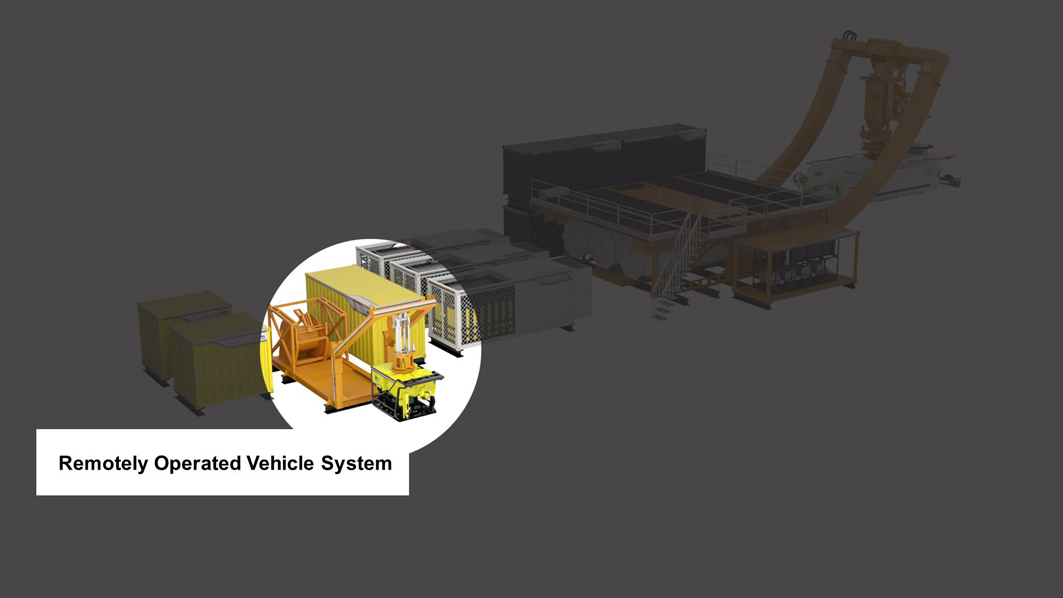
Remotely operated vehicle system
ROV & Side Scan Sonar provide search, survey, debris-clearance and intervention capabilities.
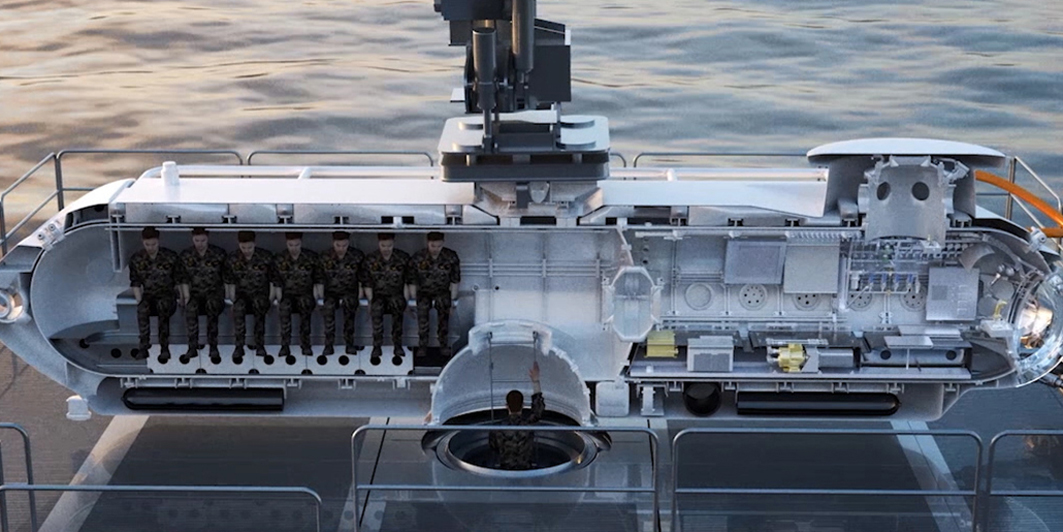
Vertical Transfer Under Pressure (TUP)
Vertical TUP reduces the footprint, weight and complexity of the entire system, reducing the time required for deployment and installation. Revised geometry in the SRV eases casualty handling through the new arrangement.

